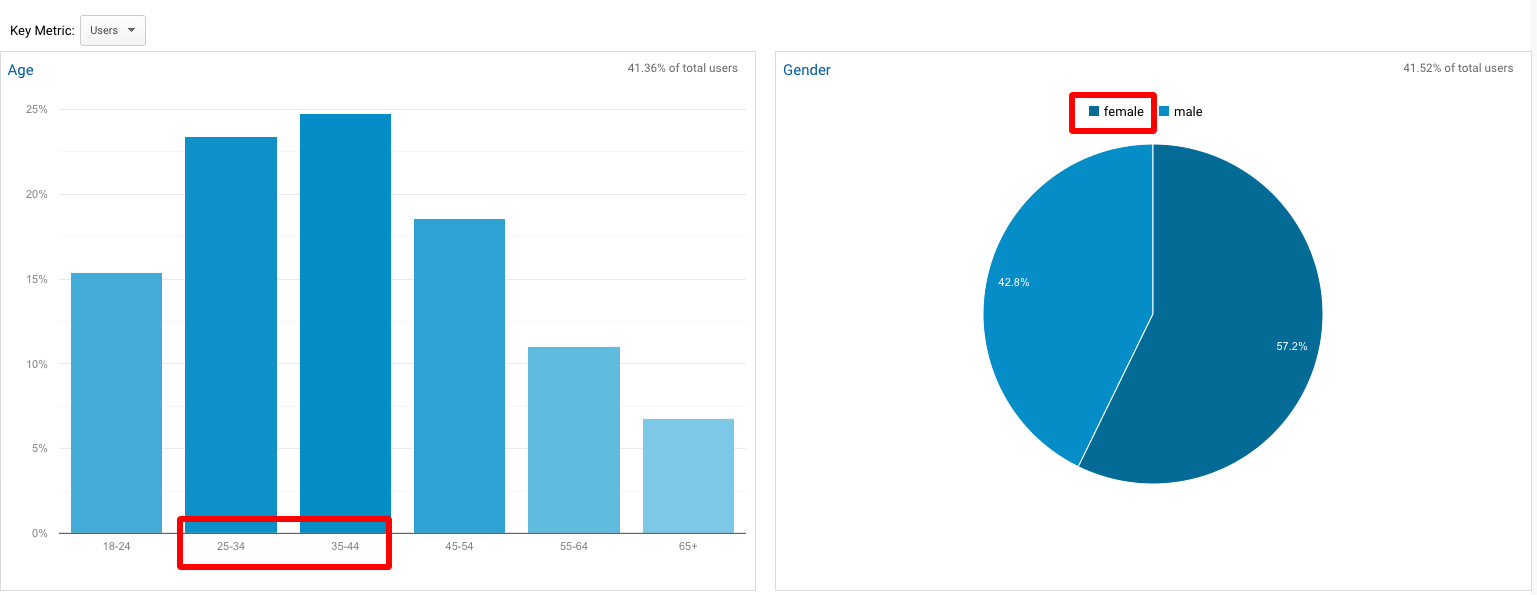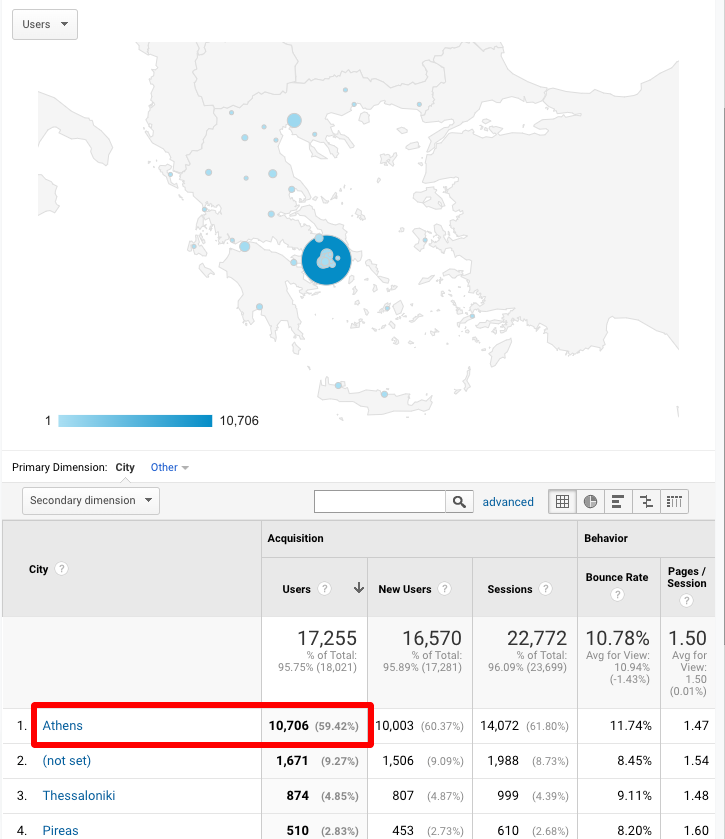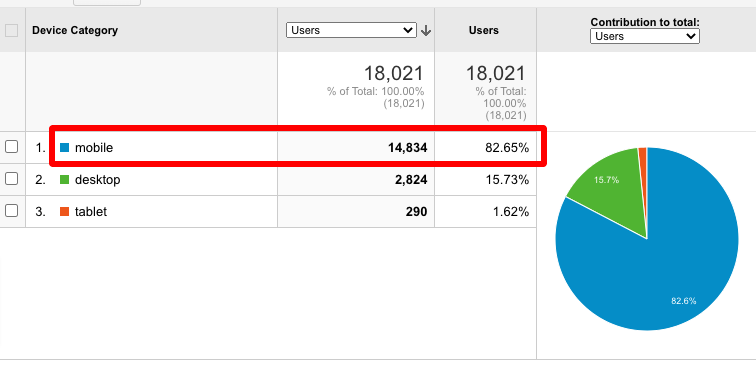
Starting the journey
The business goal
Anyone who wants to start an online presence has, or should have, a goal to achieve.
No one starts building a page on the internet without a goal (even if there isn’t a core goal, perhaps the goal is learning and experimentation, so gaining experience is also a goal).
The medium that can most easily help reach the goal may be a full website or a simple page on another website (e.g., an Instagram profile), but regardless of the medium, the purpose of the online presence is best made clear from the start.
The goal of the online presence is called the business here—i.e., enterprise or activity.
The business behind an online presence may relate directly to money or not; for example, it can be building a community around a hobby and acquiring/sharing information.
For every kind of business, there are types of online presence that are designed and structured to facilitate achieving/converting traffic into the desired outcome (conversions).
Therefore, choosing the core business/goal of the online presence helps in using the most suitable technology for it.
Let’s look at the 10 most fundamental types of online presence.
1. Business.
Showcasing a business online is among the most popular and multi-faceted cases of web presence.
Business pages facilitate selling products or services. They also inform about new products or services and try to persuade prospective customers why they should choose them.
The main goal is usually to provide information and build visitor trust so that visitors convert into customers/buyers.
Business presences often include an ordering system—whether for physical or digital goods—so they resemble eCommerce sites (which we’ll see below).
A business site can be the website of a hotel where customers can book directly, or Apple’s website where someone can buy the latest iPhone.
2. Blog.
Blogs are essentially websites where someone can publish content—usually medium to long form—about anything. They mainly consist of text, images, videos, etc., around a specific topic.
Common types include travel blogs and cooking blogs.
The business goal is to create an audience through content creation that can provide value either in financial terms or in terms of information and awareness.
A blog’s financial goal could be selling ads and placements, subscriptions for specific content, revenue via affiliate links (a cut on sales from traffic referred by the blog), etc.
The informational goal could be updating a club on upcoming activities, building a community with shared interests, running a non-profit initiative, etc.
3. eCommerce.
As with official business websites, eCommerce websites—or online stores—aim at sales and, consequently, financial profit.
ECommerce websites include product pages with information, images, videos, reviews, etc., as well as the ability to add a product to a cart and proceed to purchase (checkout).
They also have systems for sorting and categorizing products so it’s easy for a visitor (and for machines, as we’ll see later) to navigate, discover the product that best meets their needs, and select it.
Businesses and individuals choosing this type of presence have two options: either create a standalone online store or get pages and presence in a marketplace—a website type that aggregates and showcases products from many stores, online or not, with some kind of commission.
For Greece, a very popular example is Skroutz.gr.
A popular recent variant is “Drop shipping.” In this model, the retailer sells products to customers without holding stock, collaborating with a wholesaler who stores products and fulfills orders to the customer. Profit comes from the retail–wholesale price difference. In simpler terms, the retailer advertises a list of products to prospective customers via the online store and accepts orders at retail price; then orders the products at wholesale price from the wholesaler, who ships directly to the customer.
4. News.
News sites are another type of online presence that aim to provide news and updates.
Sites like The Guardian, BBC, and CNN are successful examples in this space.
While consuming topic-related content is the goal for a news site, the business starts from content consumption and beyond.
In recent years, more news sites offer a free tier for all visitors and subscriptions for full access, especially if the site has high-quality content, expert contributors, strong reputation, etc.
For other news sites without subscriptions, typical revenue streams include display ads (banners), affiliate links (a cut on potential sales), paid articles, and other on-page or native ads.
The main difference from a blog is that the content flow is higher, usually less narrowly targeted, and content creators are many.
5. Web portals / Forums.
Portals are something between a forum, a blog, and a news site.
A portal aggregates information around a specific topic and presents it in a common format, making it easy for visitors to consume.
Portals attempted to solve the problem of content discovery. Their value lies in discovering, curating, and organizing useful content—often by people—so it’s easily accessible to those who seek it.
Examples include government portals, academic portals, student portals, hobby or club portals, etc.
Portals often include login so users can communicate directly.
The business behind portals usually leverages the often very high traffic to derive financial benefit.
A portal’s main goal is to give visitors personalized information and services beyond info, such as purchasing specific products/services, directly connecting visitors and businesses, advertising, etc.
6. Personal site / Online portfolio.
Another type is a personal website/page and online portfolio.
This is a more static space (not updated frequently) whose purpose is to inform about an individual, the owner.
It may include information about someone’s professional development, news about projects, showcasing past work, contact details, and possibly a blog for updates or opinions.
The goal is personal branding—presenting professional interests, highlighting specific skills or completed work so visitors get a fuller, official picture of an individual/professional with potential for contact and collaboration.
It’s essentially the official online record about an individual, usually focused on the professional sphere.
The most common personal site type is the digital résumé.
7. Education.
Education is the purpose of educational websites.
These sites offer online courses and aim to provide learning services on specific subjects.
Udemy and Coursera are two of the best-known educational sites.
They provide not only the content and the right way to learn but also certifications that learners have successfully completed a course (usually with a test at the end).
Their business doesn’t stop there. They also allow instructors to upload and sell course series in suitable formats (text, video, podcast, images, exercises, games, final exam), taking a percentage of sales.
8. Brochure / Event.
This type concerns informing and engaging visitors about a specific event or product/service.
It can be seen as the online version of a brochure, though modern sites often include more features like participation in specific actions, visitor chat, etc.
A brochure/event page provides a concise overview of the event or service and basic guidance to find more information and contact if desired.
The business goal is quick information around an upcoming one-off event or launch of a product/service, plus guidance for participation/contact, etc.
9. Non-profit sites.
While the above types have goals that in one way or another lead to profit (except perhaps personal blogs without direct financial interest), non-profit sites aim to showcase the activities of organizations that do not seek profit (e.g., charities).
The goal is to present their purpose and connect with potential donors to continue their work—usually tied to a significant problem like environmental pollution.
Beyond soliciting donations, non-profit presences can inform visitors about ways to contribute, gather signatures, etc.
10. Wiki.
Finally, a very popular type of online presence is the online encyclopedia (Wikis).
The most famous is Wikipedia; WikiHow is also well-known.
“Wiki” refers to the fact that these sites are built collectively by a community of users and allow everyone to create and edit others’ information.
The business behind Wikis is the free provision of knowledge and information based on collective effort.
Because running such sites with potentially billions of entries requires resources and is costly, beyond donations there may be activities like selling merchandise (t-shirts, keychains, etc.), whose revenue covers part of the expenses.
The above website types aren’t exhaustive; there can be others that more or less fit the categories.
A website can belong to multiple categories—for example, a personal blog primarily for personal branding that also has portfolio elements and simultaneously sells (eCommerce) online courses on a specific subject (Education).
However, the core goal should remain singular, so targeting and development are more focused and the presence more effective.
Since anything created online requires time and resources, experience shows that targeting one of the above is something not to ignore: the world’s largest companies succeeded by focusing on a single domain—e.g., Google in Search (portal/search engine), Amazon and Skroutz in eCommerce, Facebook–Instagram in social networking, YouTube in video.
Thus, before any action to build an online presence, it’s vital to define, record, and analyze the core business goal of that presence.
Factors like whether and how the online presence will succeed, whether it should generate profit, how many and which people will contribute content, etc., will determine the main type of presence and set a boundary framework within which its creation and operation will be designed.
It often happens that someone starts with the easiest point—e.g., a page on a social network (Instagram, Facebook) or on an aggregator (Skroutz.gr)—to learn and test capabilities and needs, then change course. This isn’t necessarily bad; however, with good upfront research and analysis of needs, one can save time and money and reach personal success faster.
The target audience
The answer to “do you have a clear idea what your customers actually want?” determines how well the audience is known.
Personas—user archetypes targeted by an online presence—should be studied during both the creation and operation of any business, physical or online.
How are personas useful for a business?
They help understand motivations and needs and how these translate into the use and consumption of online information—and ultimately into purchase decisions.
For example, visitors to a mountain-destination guesthouse site likely have good spirits, are planning a leisure trip (perhaps as a couple), are probably young to middle-aged, and their interests revolve around food, entertainment, and a pleasant experience.
On the other hand, visitors to an elderly care facility site are typically older, have a pressing issue to solve (care for elderly relatives), often with coexisting health concerns, so they mainly care about care, health, and trust for their loved ones.
Similarly, visitors to a page listing on-call pharmacies or hospitals need immediate, fast answers for navigation and contact—something urgent and possibly serious has happened, and there’s no time to waste.
Personas can also help identify negatives, like usability barriers on a page, product range gaps, or even shortcomings versus competitors.
In the mountain guesthouse example, a negative might be not including public transport access info or lacking early check-in options.
For the on-call pharmacies example, a negative would be failing to place contact and navigation info front and center.
Personas generally help convey a site’s vision about whom it targets, and influence structure, layout, branding, etc.
Once a user profile (or more) is defined, language and tone can be better managed, as well as messages, imagery, and generally how value is communicated relative to visitors’ needs.
A user profile is a human-centered approach that provides data and insights to communicate with users as individuals with specific preferences and interests.
Persona data can be simple—gender, age, and location—or more complex—interests, visit frequency, a list of favorite products, preferred travel seasons, and travel spend.
Knowing well the profile and needs of the target customers can be worth its weight in gold.
Personas can be the driving force of an online presence and should determine language and tone, how much information is needed before conversion, etc.
What might drive visitors to click a buy button? Who wouldn’t want to know!
For example (fig. 3.1), on the Arahova Pansion site, about 50% of visitors are aged 25–44, and roughly 6 in 10 visitors are female: this means the most important persona is a young woman likely seeking info to visit the destination.
Figure 3.1: Visitor profile for a mountain-destination guesthouse site

Adopting an appropriate tone and communication style, along with more elements that could increase the conversion likelihood of this persona, would be quite effective.
Similarly (fig. 3.2), 60% of visitors are in Athens, so providing access info from Athens (to the destination) is appropriate. Indeed, pages with access from Athens are among the most popular on this website.
Figure 3.2: Visitor location for a mountain-destination guesthouse site

Also, the device type used by visitors is essential.
In the image below, over 8 in 10 visitors access the site via mobile; therefore, developing pages and services for mobile should be a given.
Figure 3.3: Visitor device type for a mountain-destination guesthouse site

Think of a conversation with an old friend versus someone just met.
It’s much easier with the old friend, right? There’s knowledge of interests, motivators, likes, and even how not to speak to avoid upsetting them.
The same applies to an online audience.
Good communication with users can also help via their feedback and suggestions to improve the online presence—suggestions for offers, a new service, or a new product, etc.
Beyond using suitable language and content, and reverse communication of suggestions and ideas from visitors, a warmer trust relationship is built, making it harder for competitors to win them over.
In the long term, it’s proven more economical to retain an existing user than to acquire a new one.
And when new customer acquisition is needed, having sketched a core profile of key users and their needs makes it much easier and more efficient to build a list of specific users likely to be interested in what the page offers.
The options: technologies and channels
There’s an online presence when someone owns a unique location (address) on the world wide web.
Locations on the web can belong to individuals, businesses, or other entities (organizations, associations, groups, etc.).
Examples of an individual’s online presence include a personal website, a blog, a wiki page, or a profile page on a social network like Instagram, Facebook, Twitter, LinkedIn, etc.
Examples for a business or other entity include a corporate site, a microsite (a small set of pages with limited functionality), a presence as a listing on an aggregator or marketplace (e.g., participating on Skroutz.gr or Amazon.com to sell products), a corporate page or group on a social network like Facebook or LinkedIn, or registration in online directories like Google Maps, Google Business, etc.
Every online presence is linked to a unique web address to distinguish it from others.
Online presence refers to how an individual or business appears online and what internet users find when they search for information about them.
It can contain information directly controlled by the owner—images, descriptions, texts, etc.—and information not directly controlled, such as user reviews of a product or service, a poll on something, etc.
Owned vs. non-owned presence
The main distinction is where the presence belongs.
An example of owned presence is a personal website/page on servers owned by the owner (self-hosted).
A non-owned presence example is a profile page on another site, like Facebook.
The difference between owned and non-owned presence is fundamental.
With owned presence, the owner has complete control over both smooth operation and content, and no one can interfere.
With non-owned presence—e.g., registering/participating on another site (a profile page or group on a social media app)—the admin is the person, business, or group that creates the page, but the owner is the host site, e.g., Facebook. If the host decides to stop displaying that presence or is forced to shut down entirely, all information on it belongs to the host and can be taken down.
This is exactly what happened with Google’s social network, Google Plus (Google+).
Google+ launched in 2011 to compete with social platforms like Facebook, but due to low adoption shut down in 2019.
Information created there (pages, groups, etc.) could be exported for a time, but all activity on that medium ceased, meaning those who had invested their time lost much of their work.
The difference between owned and non-owned presence is fundamental.
Therefore, the basic choices for someone starting a new online presence are:
- Owned presence: Website.
- Non-owned presence: Participation/presence on another site or platform.
Which to choose depends largely on needs—there’s no simple, universally correct answer.
The answer is: it depends!
There are very successful presences built exclusively on non-owned platforms—e.g., YouTube channels, Instagram influencers, Skroutz stores, etc.
There are equally successful presences with their own owned spaces—such as the very platforms others build on: Facebook, Skroutz, Amazon, etc.
A general rule of thumb: start on a third-party site/platform to learn the demands of online presence and operational needs, then move to something owned once visitor volume grows and functionality needs arise that the provider doesn’t cover.
Generally, an owned presence requires a server that stores information and serves it to anyone visiting the connected domain. It also almost always requires some developer support to keep it running smoothly (maintenance, updates, etc.).
By contrast, participation on third-party sites/platforms doesn’t have those costs and is often free, though there’s always a tradeoff—ad sales, content exploitation, etc.
In short, the more professionally an online presence is treated, the more it shifts from free third-party platforms to subscription third-party platforms, and then to an owned website.
It’s not mandatory to pick just one touchpoint.
Someone can have a corporate or personal site and a Facebook page, a standalone online store and a presence on Skroutz.gr.
However, since managing online pages requires time, effort, and energy, most pick one primary hub to promote and a few peripheral channels to support it.
Indicatively, for website creation there are popular technologies (open-source or subscription/purchase), or one can build something entirely custom from scratch.
For website creation, the typical structure is a Content Management System (CMS), with two environments:
- The main site accessible to everyone via the URL.
- An admin area where the owner can enter info, change public page structure, configure settings, etc.
A very popular open-source CMS is WordPress.org, which powers 43% of all websites globally and 65% of CMS-based sites (12–2021).
On WordPress, WooCommerce can power eCommerce—relatively simply and easily enabling an online store within the site.
Alternatives to self-hosted WordPress.org include Drupal, Strapi, Ghost, Grav, Cockpit, Netlify CMS, etc.
On the non-owned side, options are almost endless and depend heavily on the topic and goal of the online presence.
Social apps are widely known; most people already have personal (and some, professional) profiles, pages, groups, etc.
The most popular social apps (2022):
- Facebook: 2.7B monthly active users.
- Twitter: 330M monthly active users.
- LinkedIn: professional social network, 700M monthly active users.
- YouTube: video services—850M monthly active users.
- Pinterest.
- Instagram: 1B monthly active users.
- Tumblr: blogging.
- Flickr: photos.
- Reddit: social news—430M monthly active users.
- Snapchat: mobile messaging—360M monthly active users.
- WhatsApp: mobile messaging—2B monthly active users.
- Quora: Q&A—300M monthly active users.
- TikTok: video services—800M monthly active users.
- Vimeo: video services—170M monthly active users.
- Mix: personalized discovery platform—35M monthly active users.
- Medium: blog—100M monthly active users.
- Digg: news aggregator—8M monthly active users.
- Viber: VoIP and instant messaging—260M monthly active users.
- WeChat: mobile messaging—1B monthly active users.
For business or personal (blogs) websites, many small-to-medium players choose WordPress.com (the subscription service of WordPress.org) or similar platforms like Wix, Bubble, Squarespace, Webflow.
For eCommerce and building an eShop, the best-known is Shopify. Alternatives include BigCommerce, Magento, Wix, PrestaShop, etc.
For eCommerce, one can gain presence on Skroutz.gr without even having a standalone eShop, making it very accessible and popular—especially for those wanting to enter eCommerce or small businesses with few SKUs.
These choices cover most small and medium needs without developing a self-hosted site, let alone a fully bespoke solution; however, for more complex, large-scale applications (e.g., a national news site or an online store with thousands of products), it’s likely that mid-term a custom solution will be required.
Having decided the core business of the new online presence, surveyed the main competition, knowing at least some initial elements about the audience being targeted, and understanding the technology options—whether to use an existing platform or develop a site (custom or based on existing software)—it’s possible to start building the new presence under the best conditions.
Things to keep in mind:
- Every website or page on the internet must have a goal. Finding and clarifying the goal for the future presence is extremely important.
- For every business type there are corresponding types of online presence, structured to facilitate converting traffic into the desired outcome.
- Study the user personas intended to visit the site. Then craft communication based on those personas.
- The more professionally the online presence is treated, the more an owned website is needed!
Cover image source: Unsplash.com